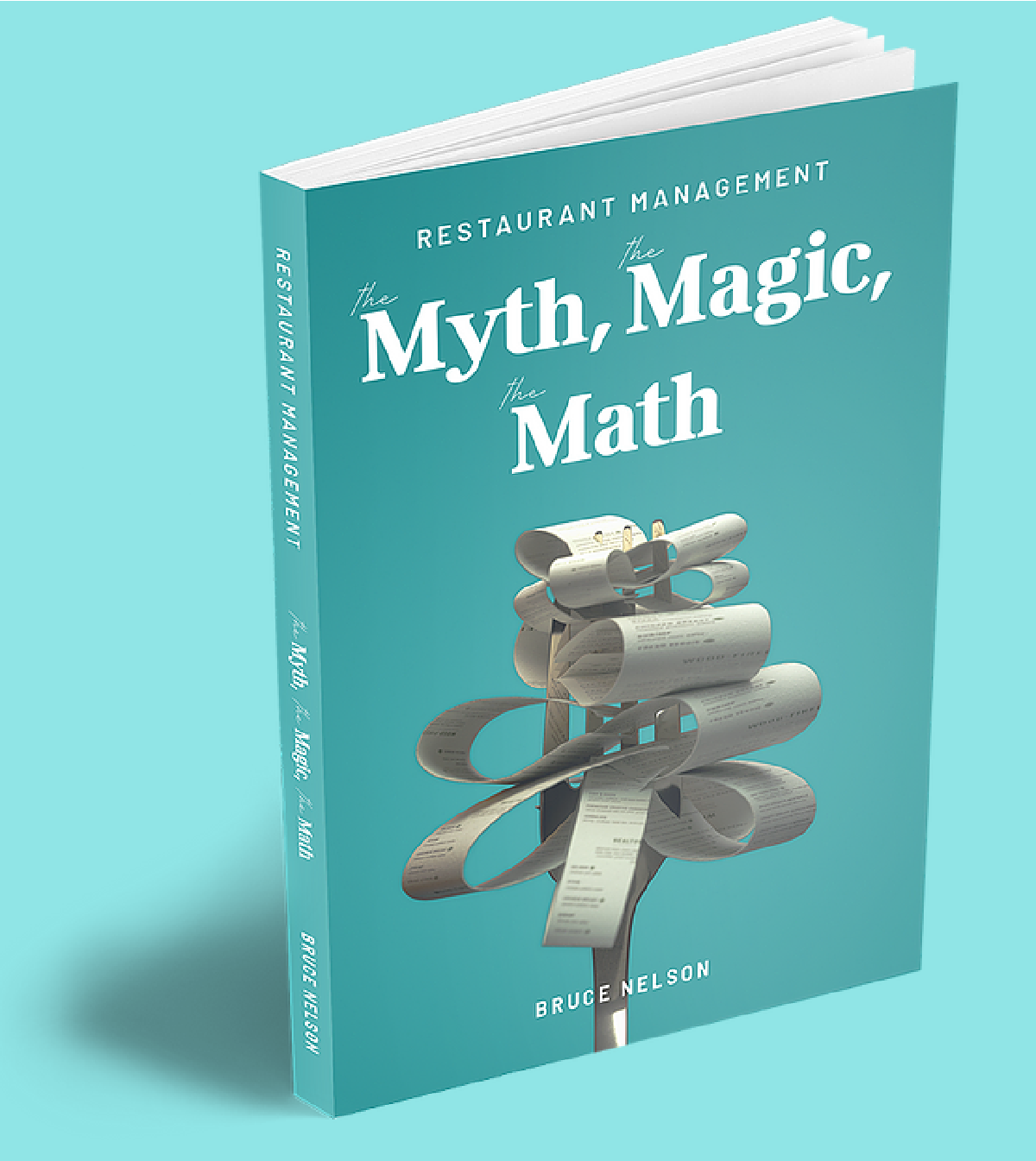Restaurant Management: The Math
5 Min Read By Bruce Nelson
This an excerpt from Bruce Nelson's Restaurant Management: the Myth, the Magic, the Math.
Part Three – The Math
“The laws of nature are but the mathematical thoughts of God.”
—Euclid of Alexandria
Oh yes, the math. This is usually the part that throws most restaurateurs for a loop. A while back, I was enjoying a nice breakfast with the minister of my church one day when he looked at me somewhat slyly and said, “You know why I got into ministry? There is no math in ministry!”
I have come to understand that a lot of people get into the restaurant business under the same notion. I mean, when you think about the people you know in the restaurant business, they are by and large the academic nonconformists. You can spot a future restaurateur in elementary school. They are the ones with “doesn’t play well with others” checked on their report cards. Future restaurateurs are the young charges in school who struggle sitting still in their seats, standing patiently in line, and focusing on the task at hand. Future restaurateurs stare out the classroom window dreaming about what life will be like when they are released from their academic prison. They often fall asleep during math class or prefer to doodle in the margins of their homework rather than work through mathematical equations.
Fortunately for my industry, restaurants are the perfect landing spot for all the young “academics” who did not pay attention to the teacher and the chalkboard. The hospitality industry is fat with the ones who struggled with paying attention to the task at hand and stared out the window, the individuals who dreamed of cutting the chains that held them to their desk and instead dreamed of adventure. Where most academic and corporate settings require employees who can stay focused on a single task, the carnival we call a restaurant actually requires staff that can multitask and thrive on unpredictability. This industry is one of the places where people diagnosed with ADD truly succeed. But it would take another book to cover how academia fails to address these unique characteristics and nurture these future “single task” nonconformists.
All that said, you now know why the restaurant industry is not filled with STEM and economic majors. To be honest, those who may understand the math behind creating successful restaurants—CPAs, MBAs and architects—don’t have the stomach or the will to work the required hours to run a successful restaurant. I have tried in vain to explain to my CPA how I could have a negative balance in my checkbook on Friday but still cover my payroll on Monday. I have talked to purchasing managers who tried to convince me that switching from two to one-percent mozzarella cheese would save me thousands of dollars per month, who could not understand how a drop in the quality of our food would cost me way more than the fifteen-cent per pound savings. Attorneys are quite useful at putting the language and protection together for contracts, but God help you if you rely on them for financial advice for your restaurant. People in the business of protecting you from liability have no business consulting you on owning your own restaurant because you, the budding restaurateur, are basically throwing all caution to the wind and venturing into a place where security is a rarity.
The reality is, if you want to know the components for a successful restaurant, it takes a fair amount of all three. Most successful restaurateurs need a healthy dose but tempered application of the myths, a knack for creating the magic, and an understanding of how to mathematically position your restaurant for success. The trick to becoming a successful restaurant entrepreneur is to manage the healthy balance between all three. Too much myth and no math and your restaurant fails. Too much magic and no myth, and your restaurant fails. Too much math and no myths or magic and your restaurant fails. For those of you thinking of entering the restaurant business, or if you’re already there, and you find that you are lacking in one of these key areas, I advise you to find a partner or hire an individual who can supply that deficiency.

Figuring out the math required to make a restaurant profitable is where many independent restaurateurs run into trouble. Opinions and methods vary widely as to how one should go about modeling a restaurant for profit. Again, in most cases, revenue for restaurants is derived by establishing a retail price for commodities listed on a menu of options. Establishing the proper markup in an industry that makes pennies per item makes or breaks every restaurant. Standard industry practices for pricing a menu generally fall into the following three categories:
1. See what the competitors are charging and charge a little more or a little less. Or, change plate presentational portion sizes so they are not comparable to the competition.
2. Determine the food cost percentage needed for desired profit and multiply each cost by that percent.
3. Attempt to determine the actual cost involved in preparing and serving each item, including overhead and profit, and add this to the food cost to determine the final price for each menu item. (Make a standard gross profit on each item.) From a practical point of view, this method is most difficult.
Because method 3 is the most difficult to produce, most independent restaurants employ method 1 or 2 (or a hybrid of both.)
Method 1 was my “Dunvilla” approach toward pricing my first menu. The major problem with using this method is that it does not account for sales volume, and overhead as a percent of that volume. Generally, the higher the sales revenue, the lower the overhead as a percent of that volume. A restaurant producing two million per year in revenue can absorb overhead more efficiently than a restaurant hovering at one million a year. Not taking overhead as a percent to total revenue can prove disastrous if a restaurant is merely pricing menus in accordance with competitors. This is why my first season at Dunvilla was unsuccessful. I not only copied my nearest competitor’s menu and charged a dollar less per item, but I made that brilliant move with a restaurant that produced half of my competitor’s annual sales volume.
Method 2 is slightly better, but only if you can determine the correct food cost percentage to yield the desired profit. Method 2 is what I used when determining the retail prices for my restaurant Portofino. The danger here is in setting up a desired food cost percentage and managing to that percentage without knowing whether that is the correct percentage to produce the desired profit.
Here, one must look at the whole financial picture and determine overhead as a percent to sales in order to reach an accurate food cost percentage for profit. Simply relying on industry standards for food cost percentages carries the same problem as my example in Method 1. A restaurant producing two million in annual revenue still has a lower overhead percentage to revenue than a restaurant producing one million.
In a sense, setting your food cost percentage to industry standards basically establishes a business model that only works when revenue meets or exceeds the artificial food cost percentage targeted. This is what I refer to as the “sweet spot” method. There is a spot in all restaurant models whereby a predetermined food cost percentage intersects with sales revenue that produces the desired profit. But if the sales revenue never reaches that “sweet spot,” or if it fluctuates, such as in seasonal businesses, merely modeling a restaurant on a predetermined food cost percentage may prove disastrous.
As noted above, method 3 is the most difficult to execute. But establishing a gross profit on each menu item is the only way to design retail pricing on menus to make certain you meet your desired profitability. Utilizing method 3 allows every restaurateur to determine precisely what his or her menu pricing should be in order to make a profit regardless of annual sales volume.


